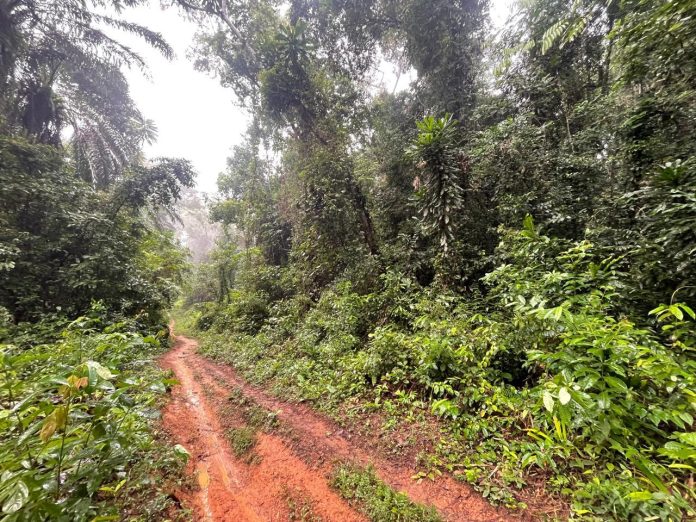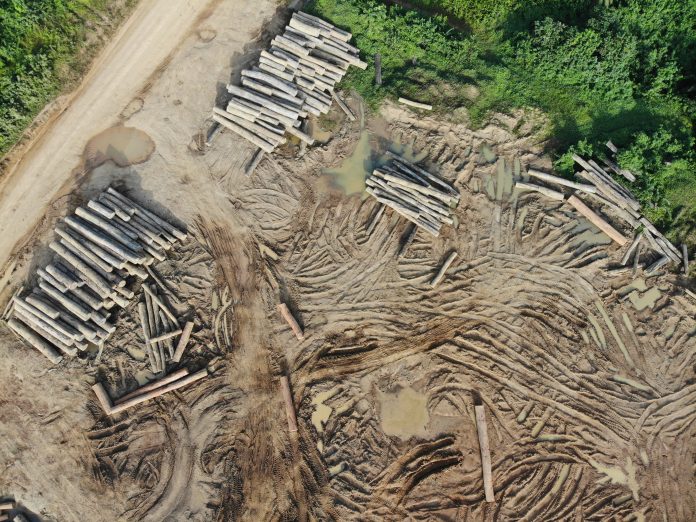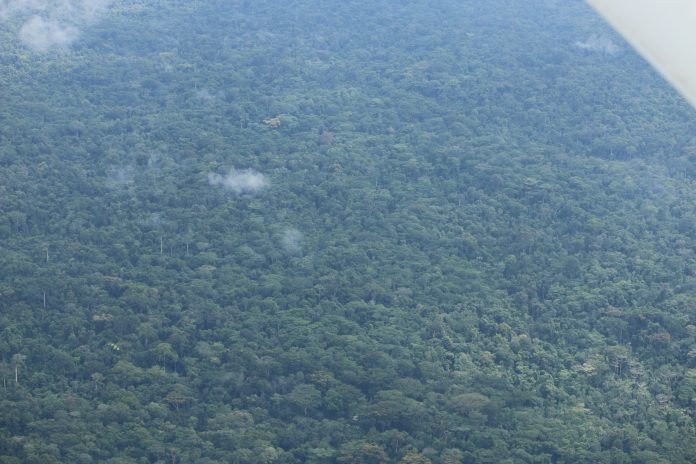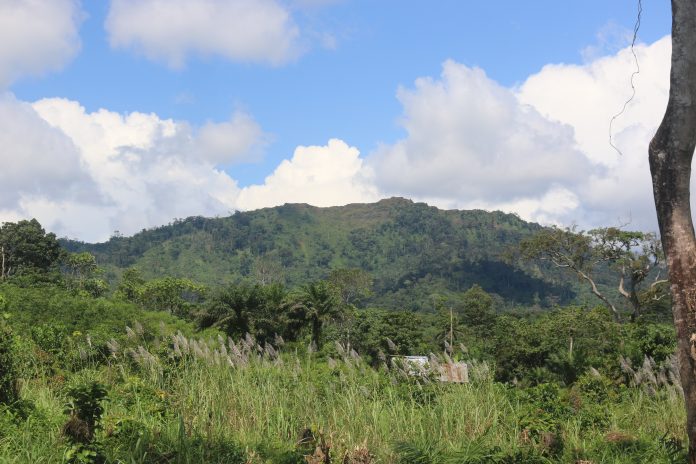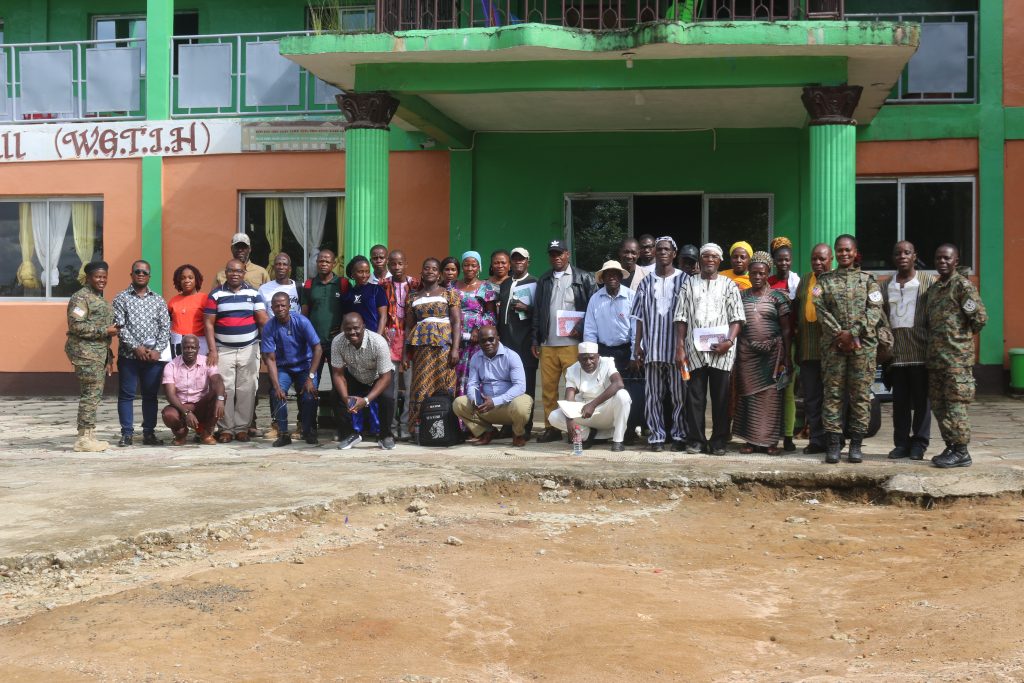Top: A footpath inside the Lower Wedjah Community Forest. The DayLight/ Esau J. Farr
By Esau J. Farr
GBOYEE TOWN; DIYANKPO, Sinoe County – In June, the people in Wedjah District signed an agreement with an NGO to protect 7,131 hectares of forest for yearly cash and other benefits.
“We have been waiting for this day to come for so many years,” said Savior Nyenbe, an elder of Soloe Town in Wedjah.
Two days later, the Jaedae District signed a similar agreement to keep 43,543 hectares of forest.
“I want to say that the people of Jaedae wholeheartedly welcome the [agreement],” said Mark Toe, a local leader in Jaedae.
The Lower Wedjah and Jaedea agreements are the first of a revolutionary approach to forest conservation in which communities receive funds for keeping their forests standing. A Paynesville-based NGO, Integrated Development and Learning (IDL), is championing the payment for stewardship.
“The agreement does not just deliver money to the community, it puts the community in charge of its own development agenda and priorities,” said Silas Siakor, IDL’s Executive Director.
Communities own about 75 percent of Liberia’s forest. This puts local people at the core of conservation in a country that holds the largest portion of West Africa’s remaining rainforests.
The Wedjah and Jaedae agreements are a two-year trial, with a possible 25-year extension. During this time, IDL will pay Wedjah and Jaedae a combined US$152,022, with the former receiving US$21,392 and the latter US$130,630. The first tranche would arrive this week, Siakor said.
In exchange, local people in Wedjah and Jaedae will not mine, farm, log, or build homes in their forests. They will, however, be allowed to harvest trees and other things for local development during the lifespan of the agreement.
Both communities have a rich biodiversity. Wedjah is home to several wildlife species, including chimpanzees. There are also important tree species. Jaedae, on the other hand, is part of the proposed Grand Kru-River Gee Protected Area, home to several species in West Africa.
During the trial, trained local volunteers or forest guards will conduct monthly forest monitoring. Over the years, illicit activities have undermined conservation efforts in Lake Piso, Nitrian Community Forest and the Sapo National Park next door. A Forestry Development Authority team has traveled to Sinoe this week to train the guards. Monitoring is expected to start early next week.
Siakor believes this will not repeat in Wedjah and Jaedae. Instead, it will increase the number of protected forest areas and prevent encroachment on those forests, he says.
“It also provides an opportunity for partnership between the community and the Wardens at Sapo, and guarantees community support for protection for the next two years.”
The trial comes at a time when commercial logging continues to fail communities. Wedja and Daedae’s neighbors, Sewacajua, Numopoh and the Central River Dugbe community forests have their share of the bad experiences.
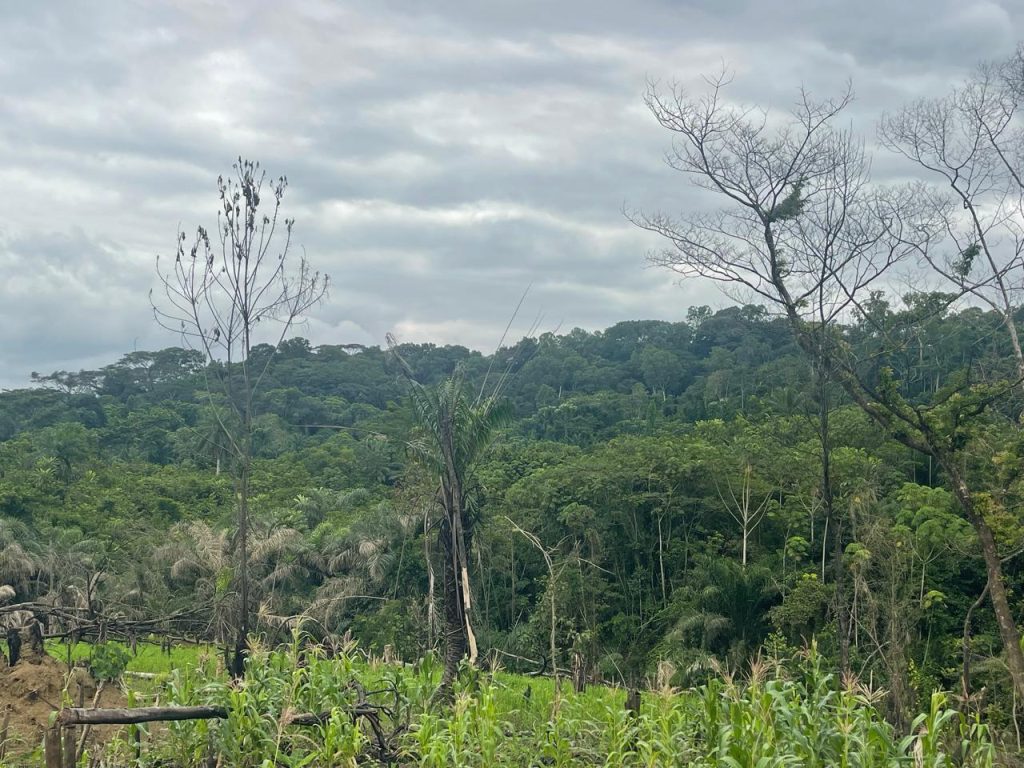
Also, the Burkinabé cocoa crisis in the southeast is a new challenge for conservation.
However, evidence shows that community-based conservation programs work. There are programs similar to the one in Wedjah and Jaedae elsewhere in Salayea, Lofa, Zor, Nimba, and Central Morweh, River Cess.
Campaigners say putting locals in charge of forest conservation will help Liberia meet its climate commitments, including cutting deforestation by 50 percent in 2030. Global Forest Watch, an institution that tracks deforestation, reports Liberia lost 162,000 ha of natural forest in 2024, equivalent to 104,000 tons of carbon dioxide emissions.
“This initiative represents a significant step forward in forest conservation efforts,” says Andrew Zelemen, a leader of the National Union of Community Forestry Development Committees. “For too long, forest communities have not received direct compensation for their role in preserving these critical ecosystems.”
This story was a production of the Community of Forest and Environmental Journalists of Liberia (CoFEJ).

